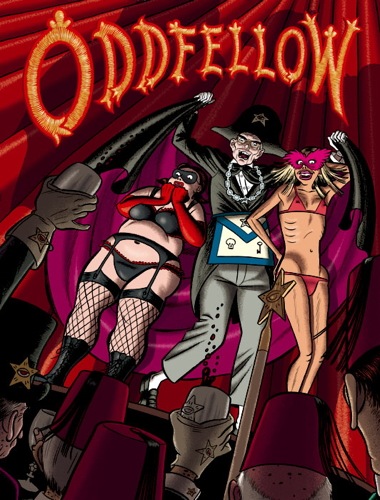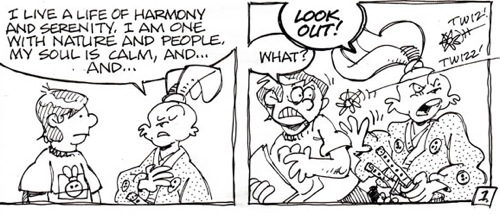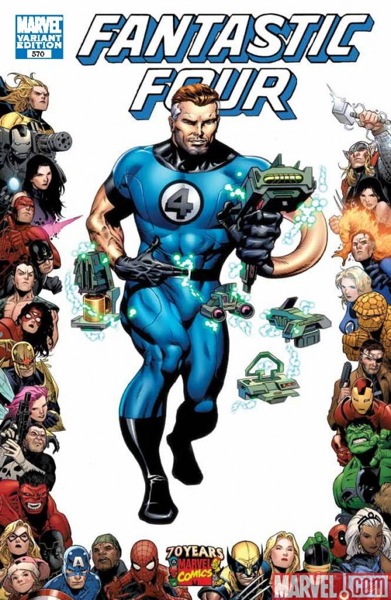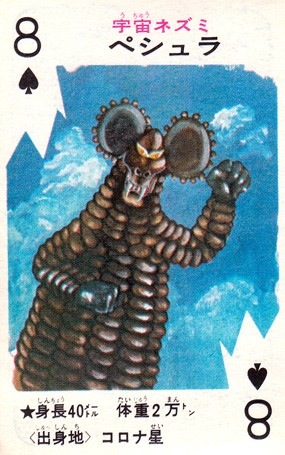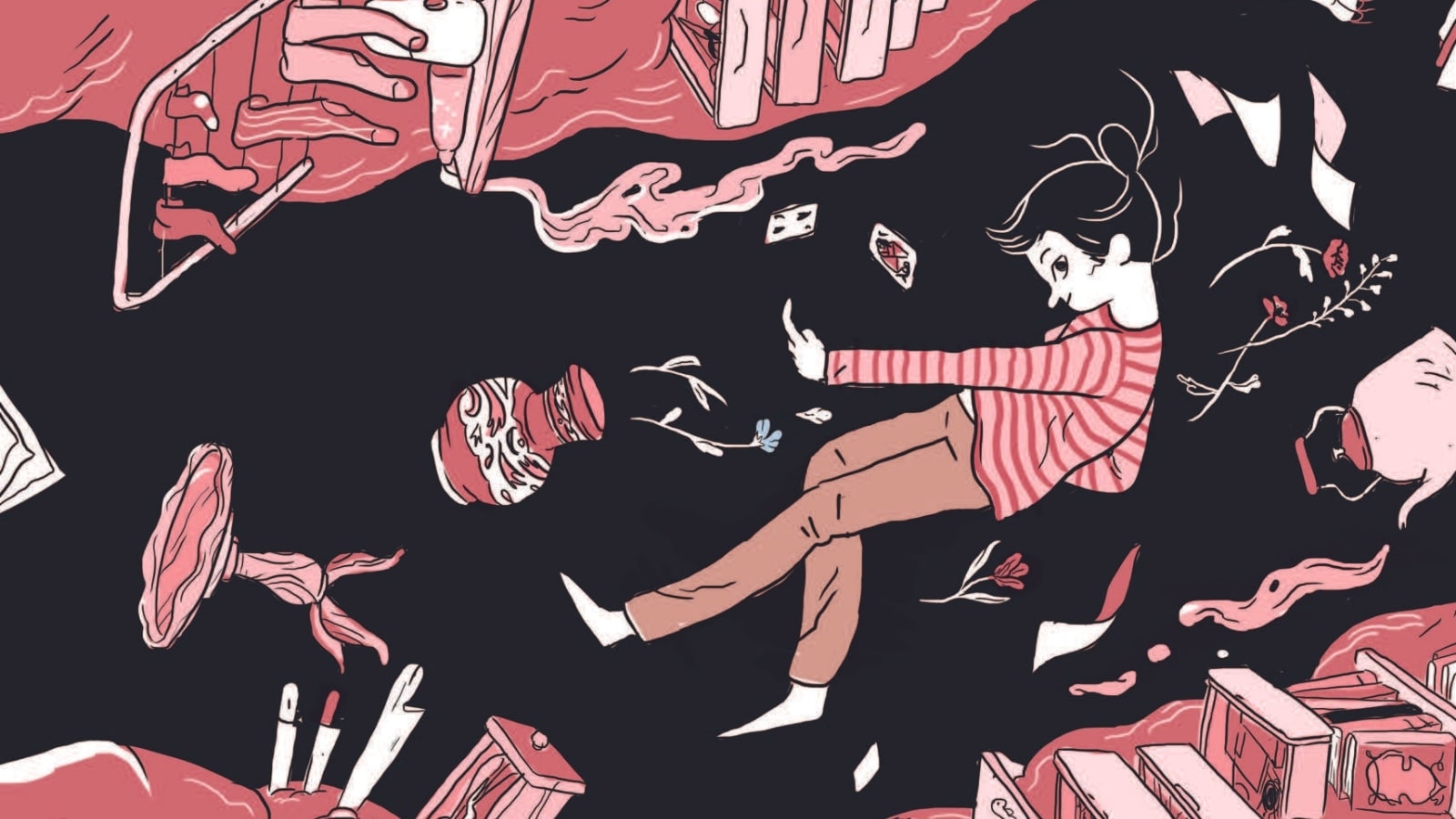§ Jason Thompson’s House of 1000 Manga examines CRYING FREEMAN, the adventure comic by the team of Koike and Ryoichi Ikegami. Thompson touches on the fact that although Kazuo Koike is revered as a comics writer, a lot of what he wrote was kinda dumb:
Apart from Lone Wolf and Cub, which just about everyone agrees is a classic, most of the manga of Kazuo Koike are the kind that people are embarrassed to like. True, he’s a bestselling author, he’s super-popular in Japan, and he even taught the Gekiga Sonjuku course in manga, which several successful manga artists attended when they were fledgling noobs. But most of his manga are pulpy and trashy, full of violence and sex and rape—even Lone Wolf and Cub is deep down, beneath its historical veneer which makes people give it a pass or think it comes with the time period.
We’re sure someone somewhere has written a treatise on the seinen manga obsession with rape. Even our own beloved Tezuka — or maybe especially our own beloved Tezuka. A dedicated humanist, Tezuka was clearly concerned with the lot of women…he just had to show how crappy it was over and over and over.
But oh, that Ikegami!
INTERVIEW LINK EXTRAVAGANZA:
Artist Camilla d’Errico:
Each painting is a puzzle. I use the imagery of the animals to create a visual riddle, each animal representing a part of the girl’s personality, her secrets, desires, and emotions. I’ve always had a fondness for nature since I was a child, my parents are great nature lovers and raised me to see the beauty in it. This is something that I wanted to translate into my work. Many times people have preconceived ideas, or fears, of certain animals, and in my paintings I want to dispel those, so that people can see the animal for its beauty without feeling afraid or squeamish.
§ Jason Little:
WCP: You moved from self-publishing formal experimentation to doing more popular works with large publishers. How did this evolution happen for you, and how do you feel about it?
JL: Very uncomfortable. I used to identify myself as being like Lewis Trondheim in France, who is capable of sustaining separate careers in very mainstream comics (Donjon) and highly experimental comics (Oubapo) simultaneously. Well, it turns out I’m no Lewis Trondheim! He is among the most prolific cartoonists in history. I, it seems, am among the least. Doing comics with straightforward storytelling under contract was, for me, all-encompassing, and my career as an experimenter is suffering horribly. My vision for future work is to take my ideas for accessible stories and smush them together with experimental forms. I am deeply interested in exploration. I find it saddening when an artist leaves experimentation behind.
§ Erik Larsen talks about his new one-shot HERCULEAN:
This Herculian one-shot is a chance for me to stretch a little. Style-wise, I don’t feel obligated to conform to a certain style like I’ve done for my other projects. Take for instance the stories from Popgun; I did one in a style reminiscent of Art Spiegelman, and another that’s just pretty cartooning. It’s cool to be able to do that. It’s kind of like sketchbooks I see from artists; oftentimes you’ll see an artist do some dramatically different stuff in their sketchbook than what they’re known for. I say to them “Wow, look at this crazy side of your work! I never see you do that in comics!”
§ Marvel editor Steve Wacker talks about taking over Marvel’s kids line:
So I always thought it was great training editorially, and I said to Tom [Brevoort] when I started working here that those books are the most important books we do here. They’re a great training ground for the younger editors, they’re a great way to bring in new talent and they’re a great way to take established writers and artists here and focus their attention on telling a great done-in-one story. I thought the way Marvel has used their Adventures books or the kids line here has been very forward-thinking because we use them everywhere — places that most readers don’t even see. We have them in libraries and we repackage them in magazine size to sell at department stores and stuff.
What makes it “western?”
I think it’s the pacing. In the Japanese style, you have the luxury of devoting 12 pages to something like walking down the street or drinking coffee or even a fight scene. And I can’t devote that many pages to just one thing, because I’m limited to 24 pages in one comic. So the pacing is one thing that’s completely different. And there are a few other things, but they are very small nuances. I think the pacing of the story is what really differentiates Japanese storytelling from the western style. That might be why western comics have never made a big impression on Japan.
§ Elsewhere, Sakai himself interviews Usagi.
§ Lynda Barry. There can be only one Lynda Barry because if there wre any more the entrie planet wuld consume itself in a burst of flame:
f you love your editor, you can have it in your contract that if they go, you go, too. But this guy hated the book, and he really made it hard. It was almost done, and he made it very, very difficult. And he was a reference guy; he’s like one of those guys that has some ideas about lit-er-a-ture. So he talked about it being a picaresque novel. He goes, it’s not quite picaresque. And I made some comment, you know: I’m not as educated as you. What does that word mean? And I knew exactly what it meant. And he goes, Oh, that’s okay—because he really did assume that I was that dumb.
I finally met him and we had lunch, and I swore that I was just going to look at him like this [staring unblinkingly] the whole time, like no matter what, like I never took my eyes off of him—kill him with my little eyes. Cause it’s unnerving, right? But he couldn’t say, Stop lookin’ at me! That was fun.
§ Not interview: a survey of Fantastic Four costume changes. THat short sleeved look is pretty peppy.
§ Chris Sims looks at some crazy Pachimon Playing Cards which will provide much glee.
§ Finally some very, very good advice from Gary Tyrrell:
We’re getting on towards con season, and I wanted to put out a piece of advice for anybody that will by travelling — don’t pack your laptop (or your phone, your meds, your camera, your passport, anything you can’t stand to lose) in your checked bags. Recent weeks have seen two different webcomickers report the loss of laptops from their luggage (coincidentally or not, they both flew USAir) — as we all know, you’re not allowed to lock the bags, which makes anything portable and valuable easy pickins for those of bad intent.
We’ll second that — don’t ever check anything you don’t want to lose! After losing our luggage for a month in France, we learned that category includes underwear.



